試す 金 - 無料
Go For Indigo
Birds & Bloom
|August/September 2018
With a little landscape planning and their favorite seed at your feeder, you can enjoy this bunting’s brilliant beauty.

SOCIAL BY THE SEASON
During summer breeding season, indigo buntings hunt alone for food within their nesting territory. In winter, they often roost and forage in flocks.
The size of a sparrow but more finchlike in appearance, an indigo bunting is truly dazzling. But its flashy hue is not really indigo at all. In fact, no bird has a true blue pigment in its feathers. “The color occurs as an interaction of light within a complex feather structure,” says nature columnist, birder and author Gary Clark.
It takes a male bunting two years to reach its full iridescent splendor (which he loses every winter as he molts into brownish feathers). In the meantime, younger males sport splotches of brown and other off-color shades, while the females are tan with a whitish throat.
このストーリーは、Birds & Bloom の August/September 2018 版からのものです。
Magzter GOLD を購読すると、厳選された何千ものプレミアム記事や、10,000 以上の雑誌や新聞にアクセスできます。
すでに購読者ですか? サインイン
Birds & Bloom からのその他のストーリー
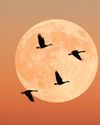
Birds & Blooms
Ready to Fly
For birders, spring migration is something to look forward to and be celebrated, but how do birds know when it's time to begin their travels?
2 mins
December 2025 / January 2026
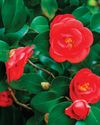
Birds & Blooms
COOL AS A Camellia
When temperatures drop, most plants wait out the chilly months, but camellias put on a show. Discover how to have these beauties thriving in your yard.
2 mins
December 2025 / January 2026
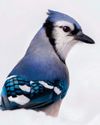
Birds & Blooms
Festive Feathers
Readers braved the winter chill to capture these snowy snapshots of the season's most beautiful birds
2 mins
December 2025 / January 2026
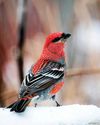
Birds & Blooms
Winter Gems
With raspberry-red feathers, pine grosbeaks cheer up chilly landscapes wherever they land
2 mins
December 2025 / January 2026

Birds & Blooms
the mysterious lives of NIGHTHAWKS
These creatures of contradiction aren't hawks and aren't the most active at night, but they are worth knowing
3 mins
December 2025 / January 2026

Birds & Blooms
Adventure Awaits
Pack your bags, get on board and find your next vacation destination in these captivating photos from far-flung travels
2 mins
December 2025 / January 2026

Birds & Blooms
It's All in the Needles
Get to know the greenery to identify these conifers
1 min
December 2025 / January 2026
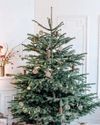
Birds & Blooms
Christmas Tree Do's and Don'ts
These pro tips will help you get the most out of this classic holiday fixture
2 mins
December 2025 / January 2026

Birds & Blooms
Trailing Houseplants
Simple, easy-to-grow plants for hanging containers
3 mins
December 2025 / January 2026

Birds & Blooms
Better Off with Bats
Rethink the unsung heroes of the night and why you should support them
2 mins
October / November 2025
Translate
Change font size
